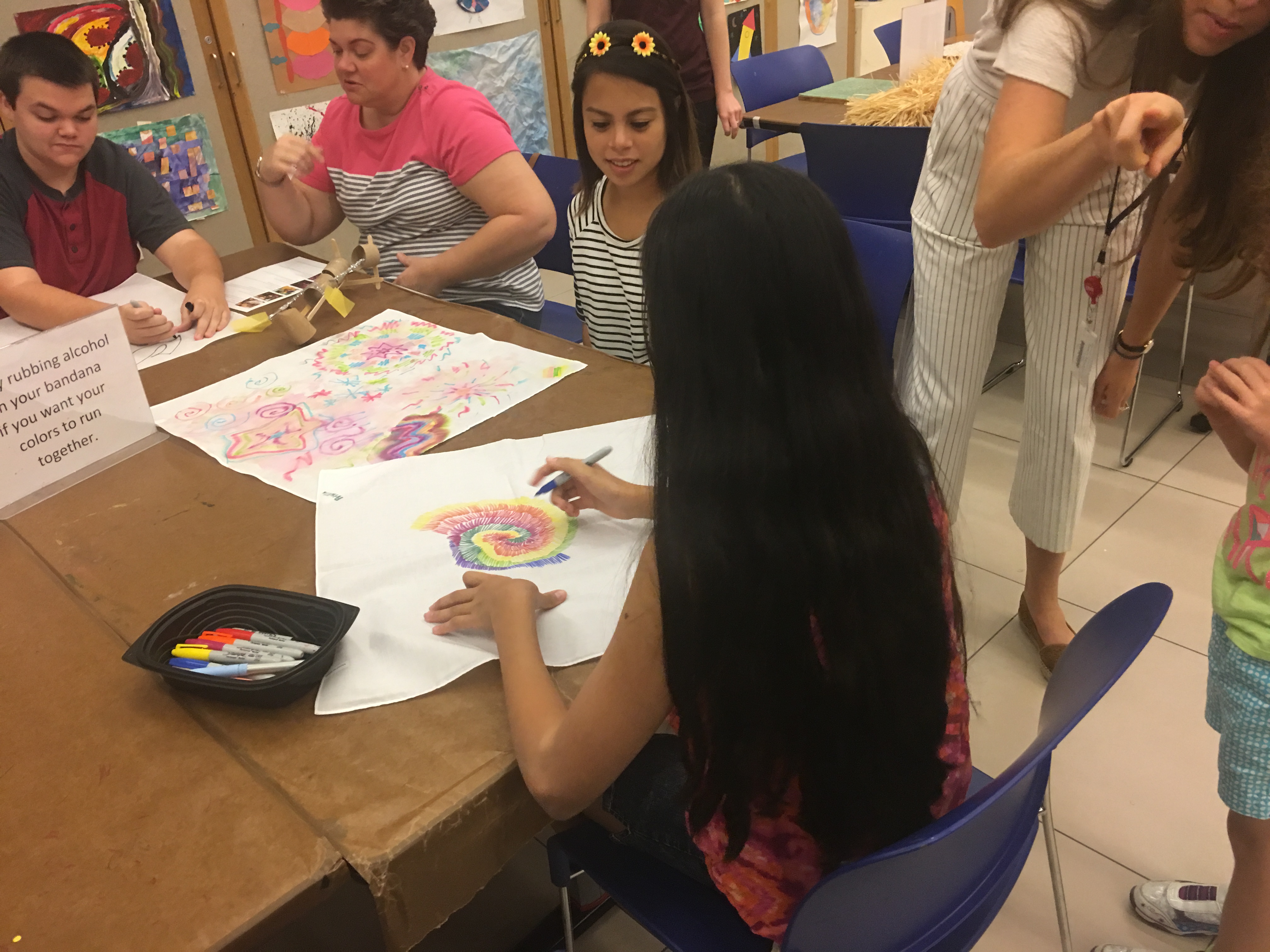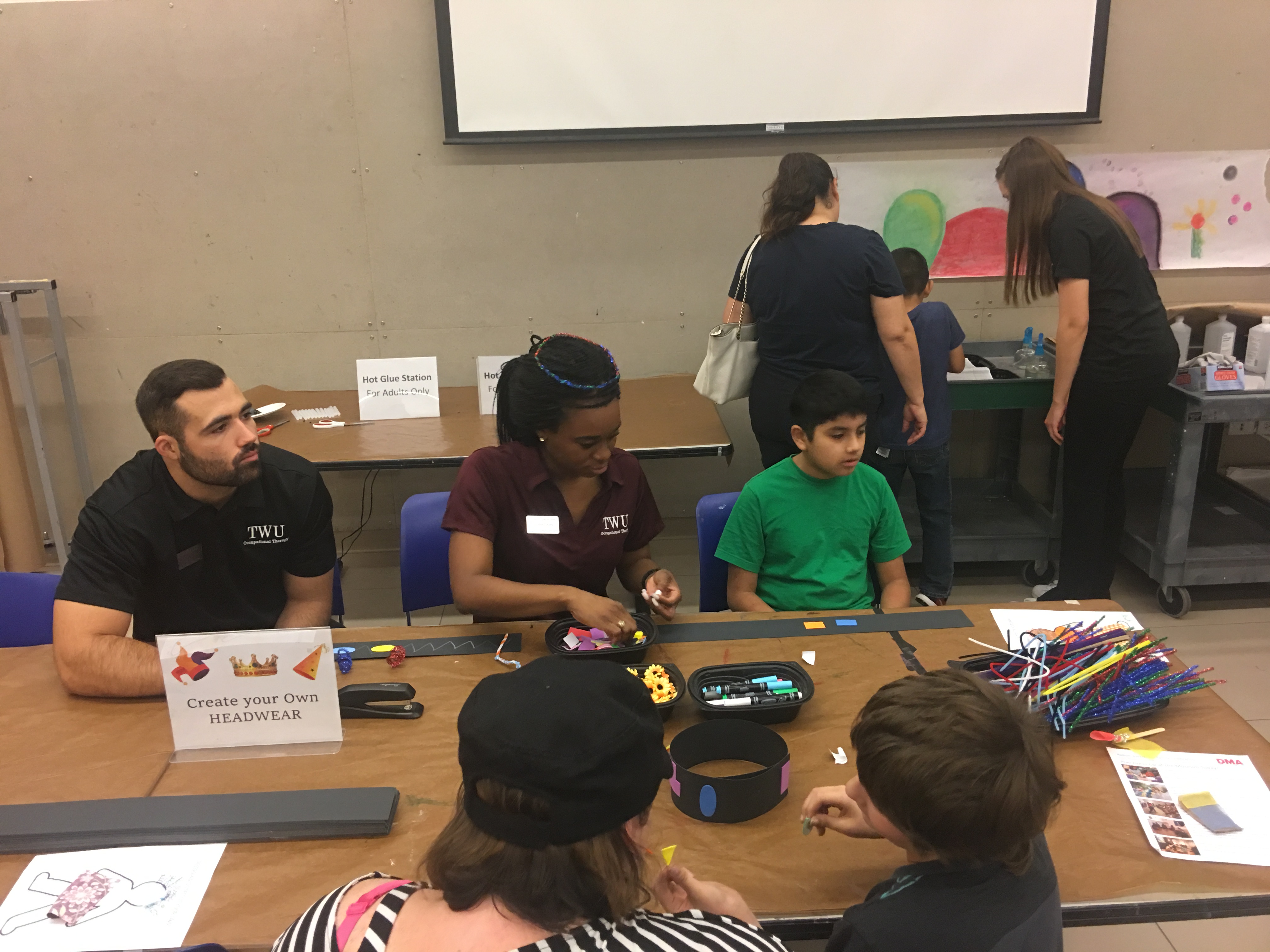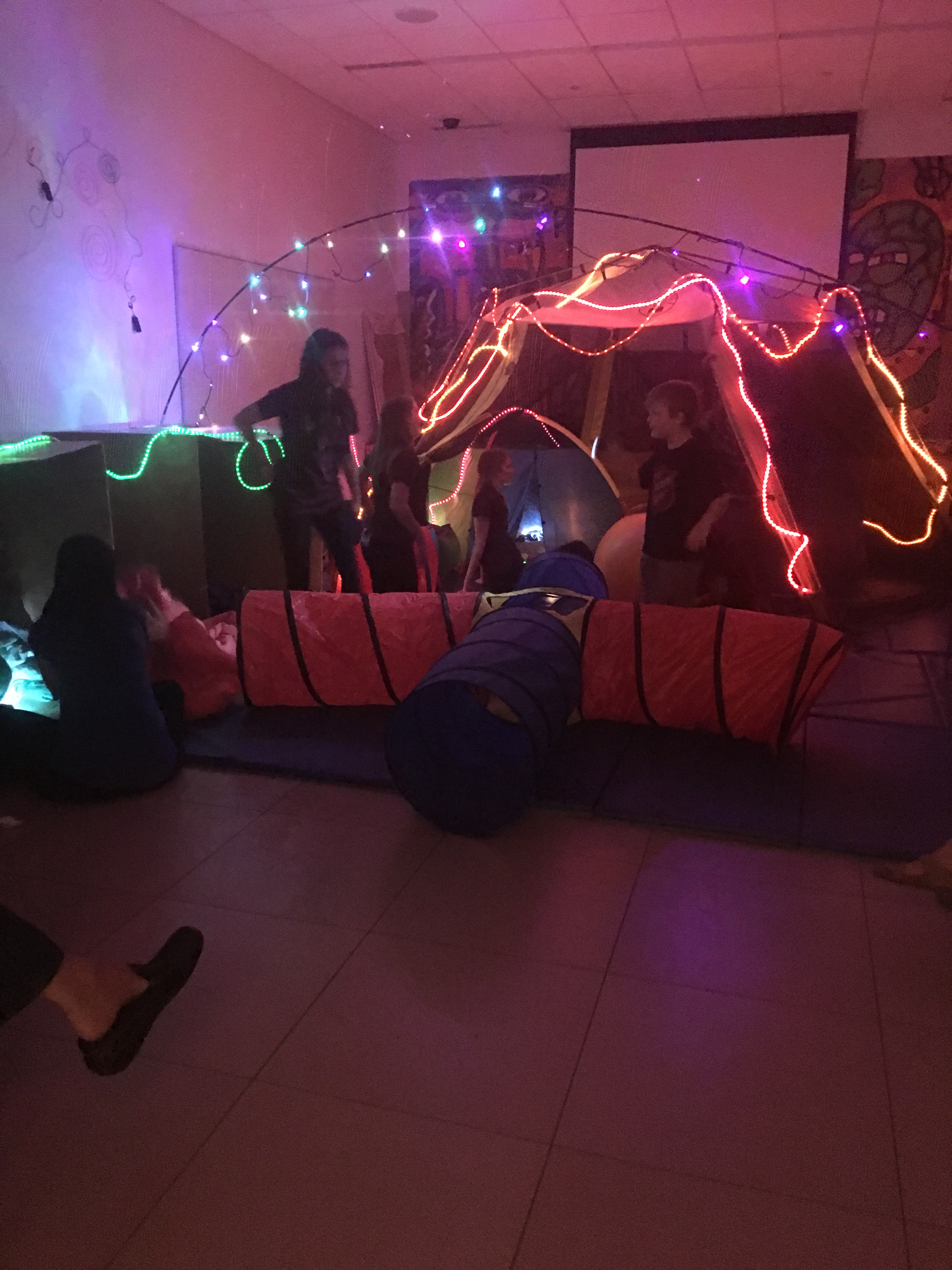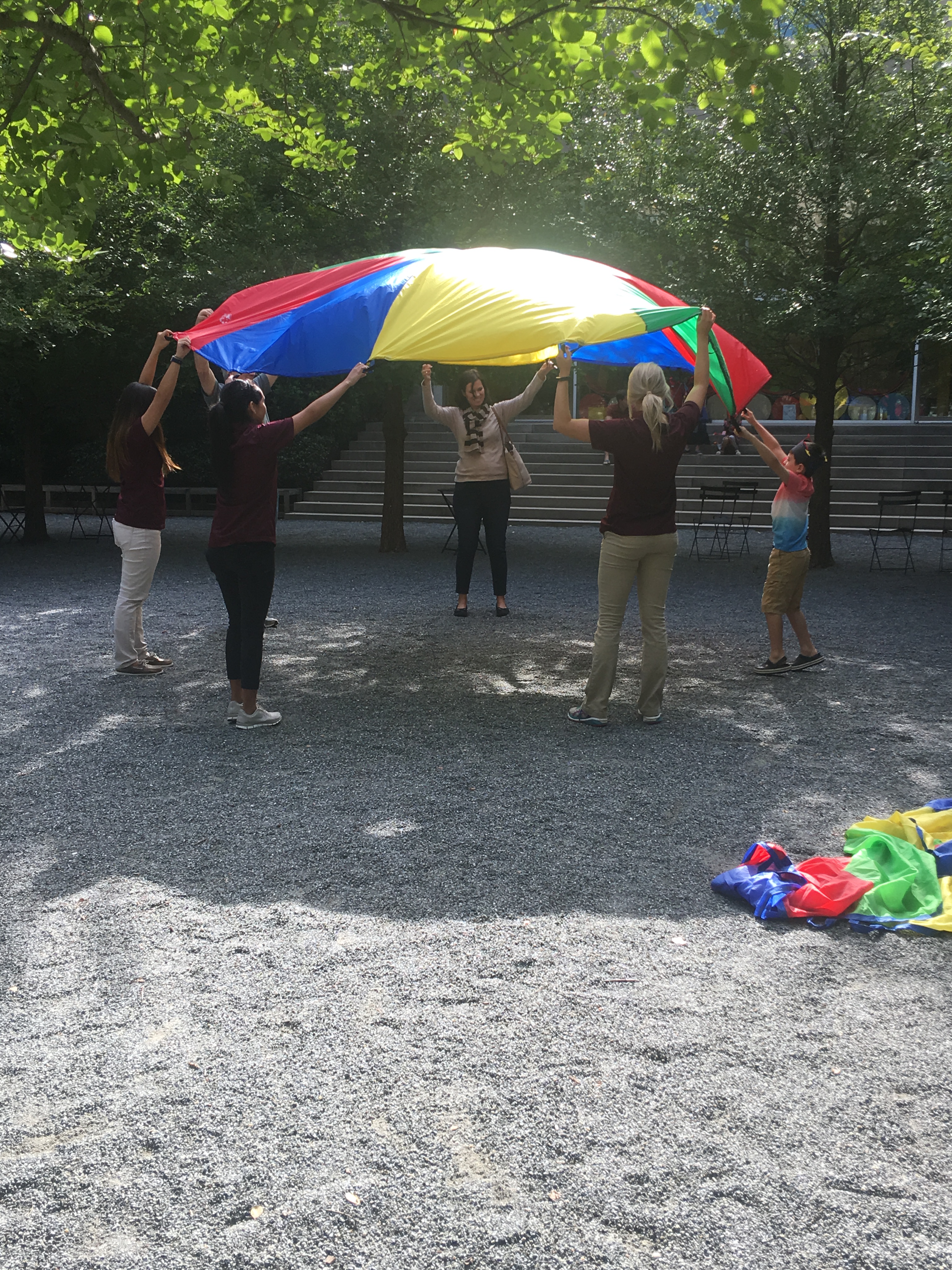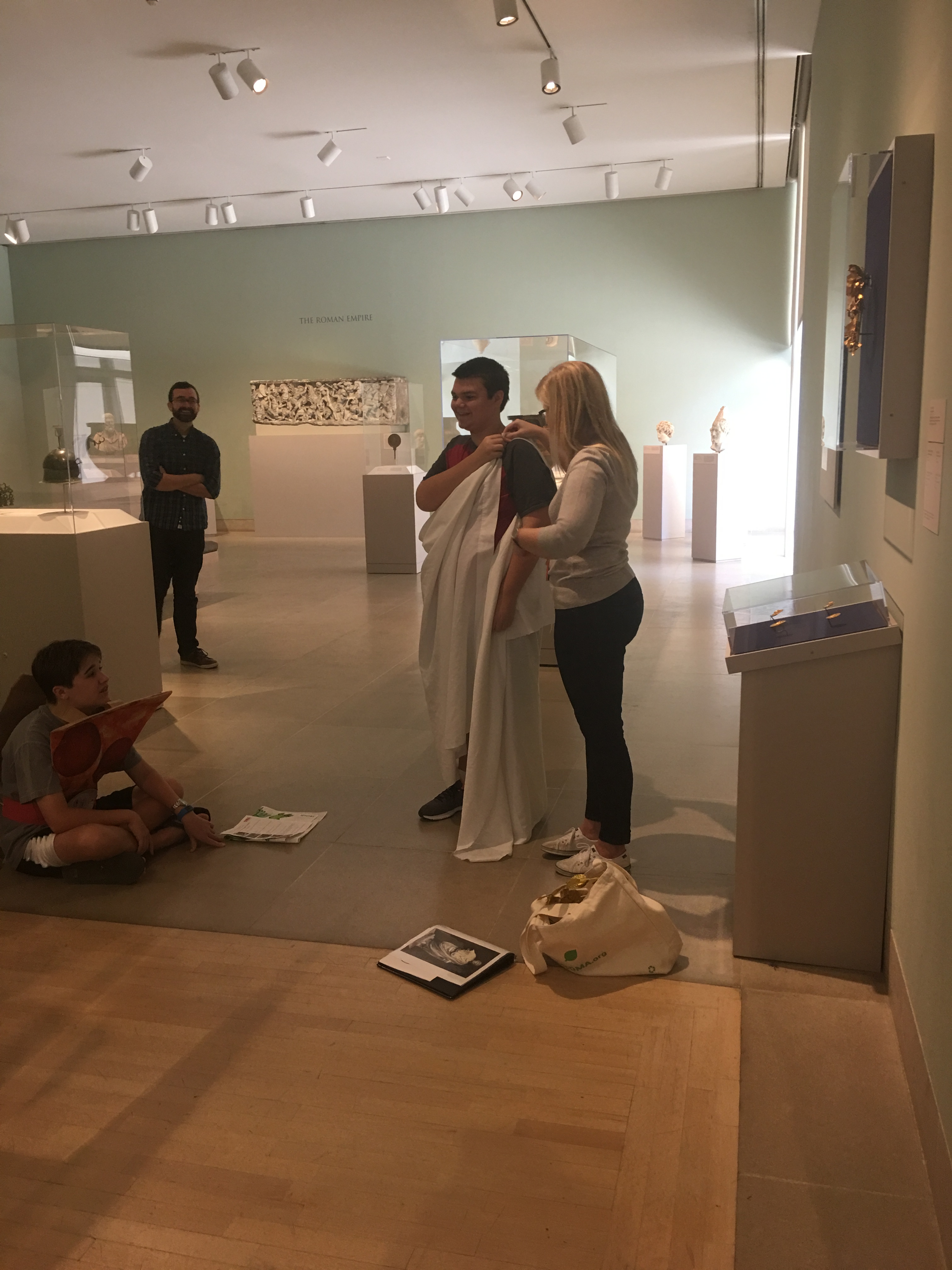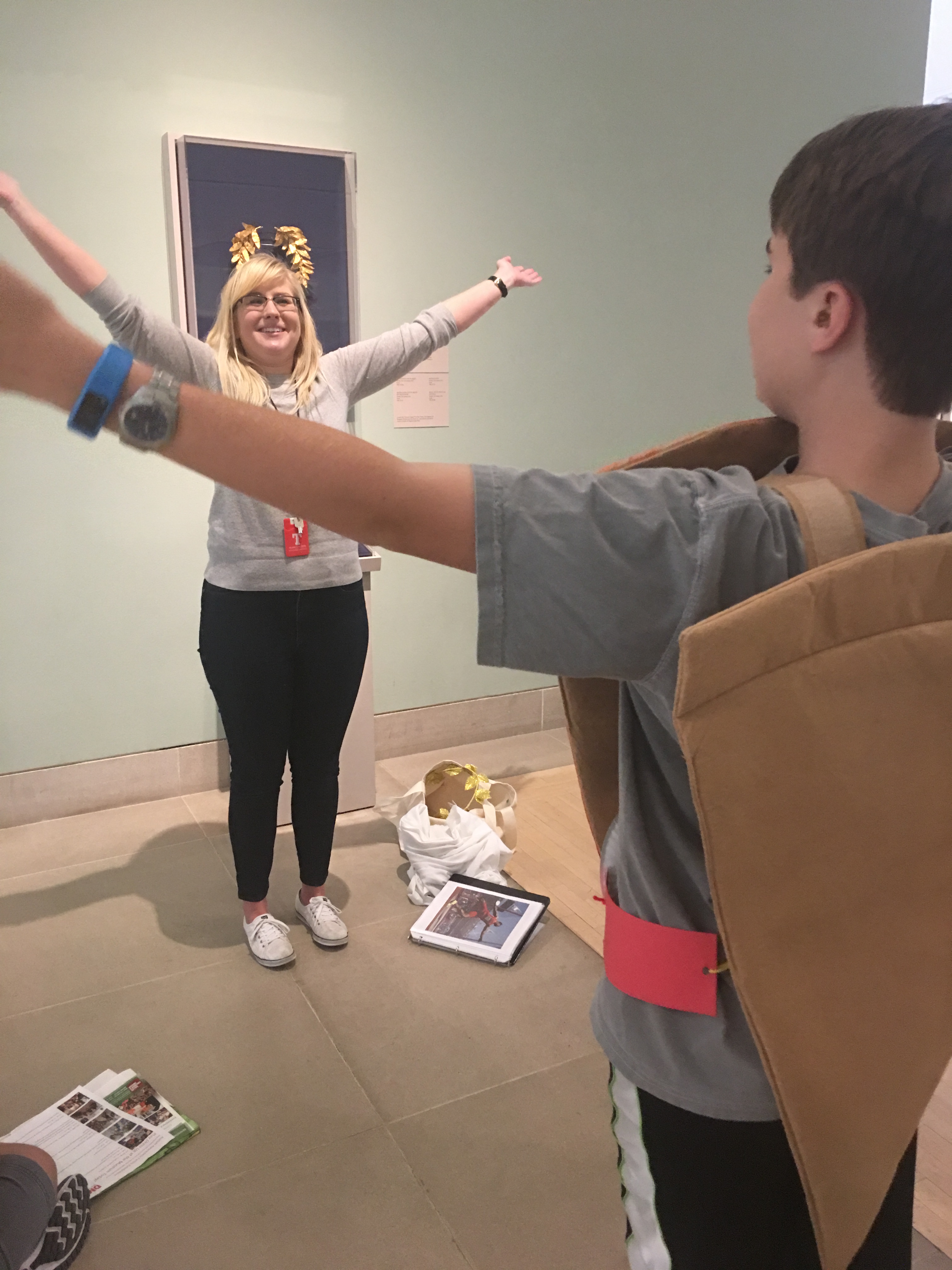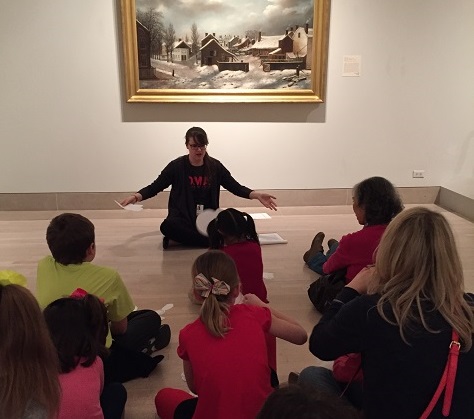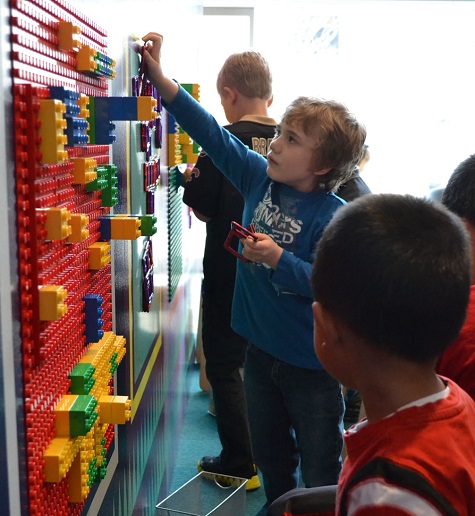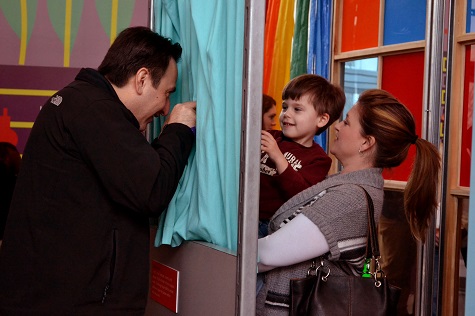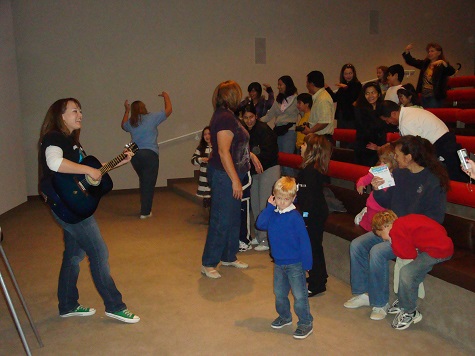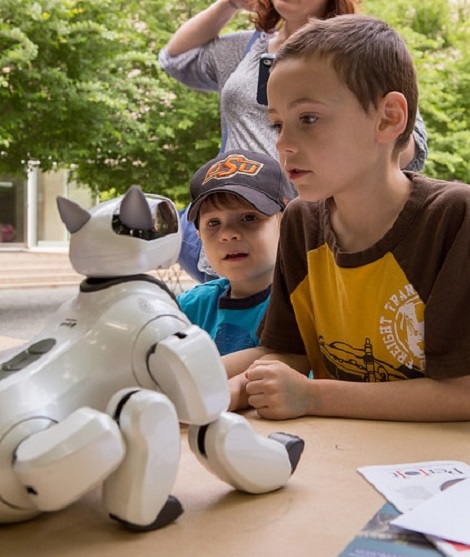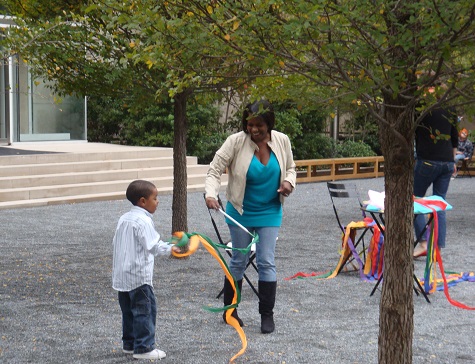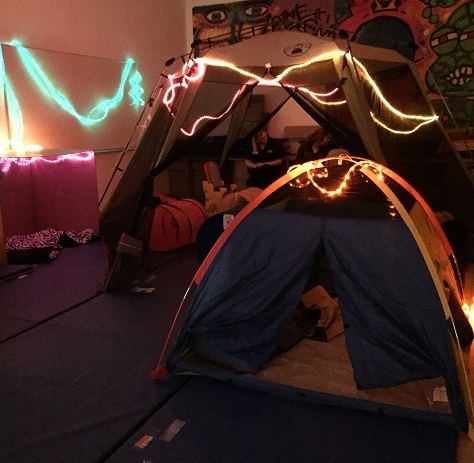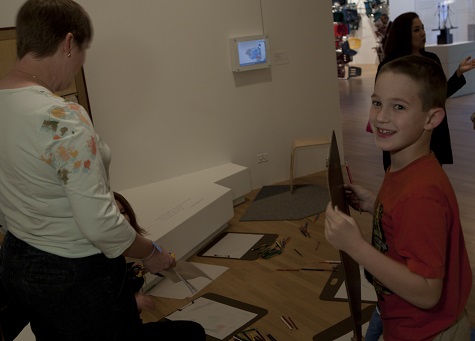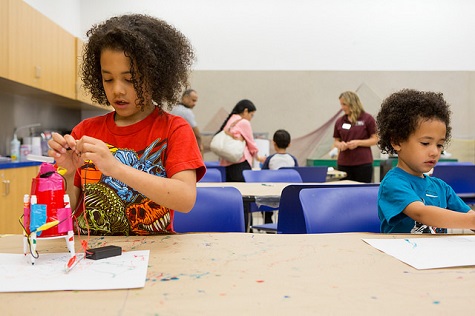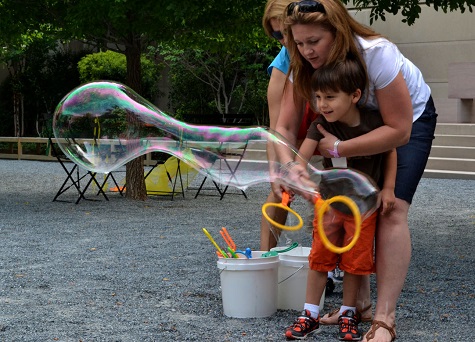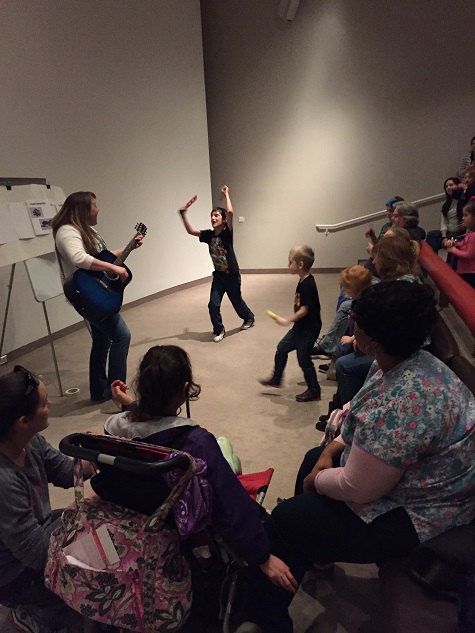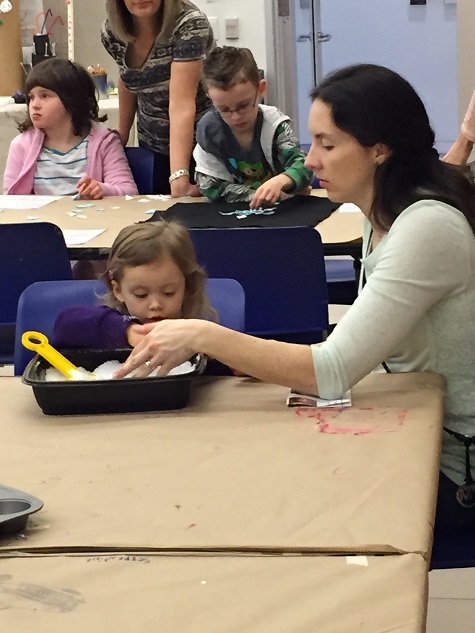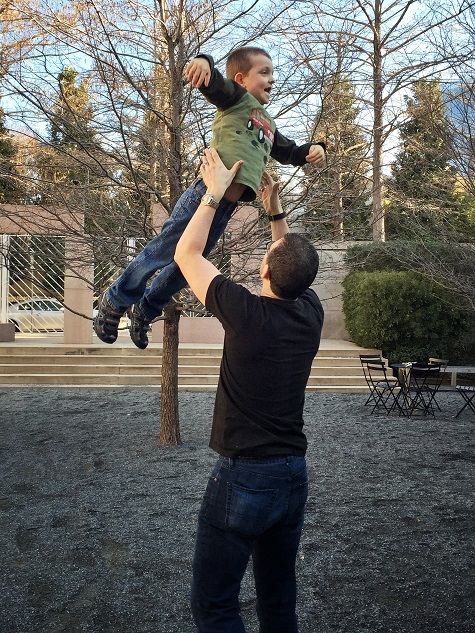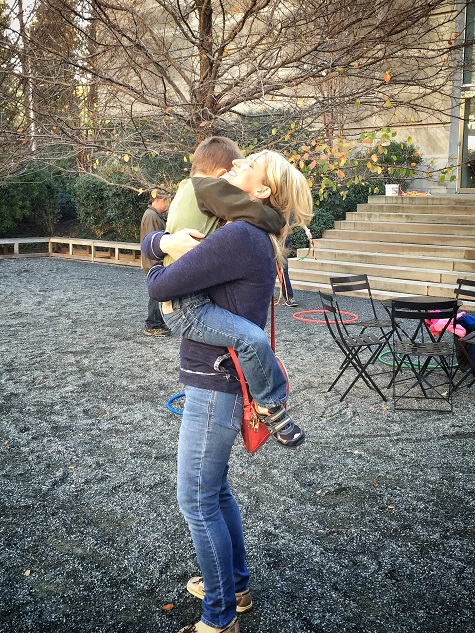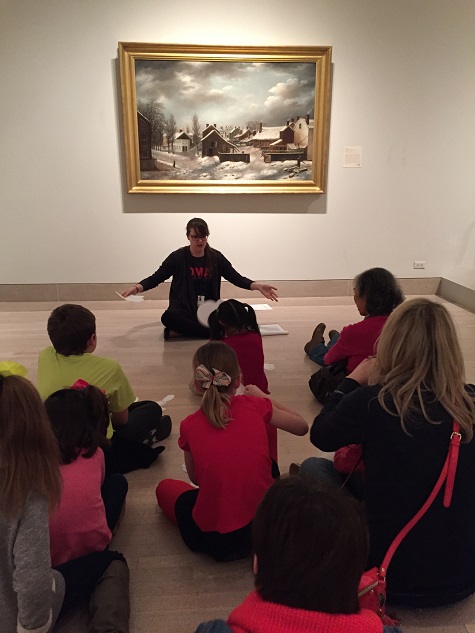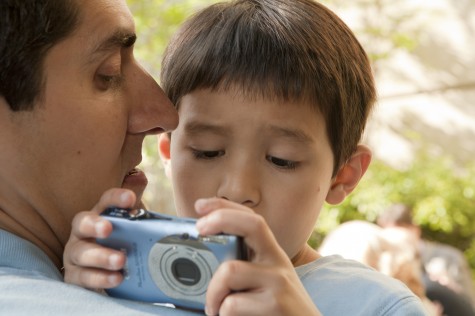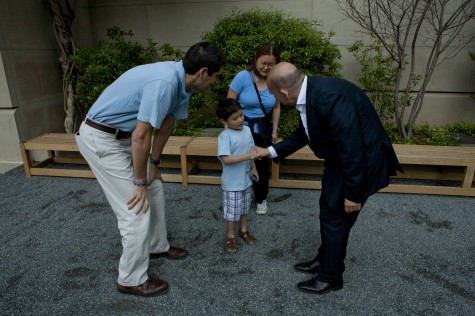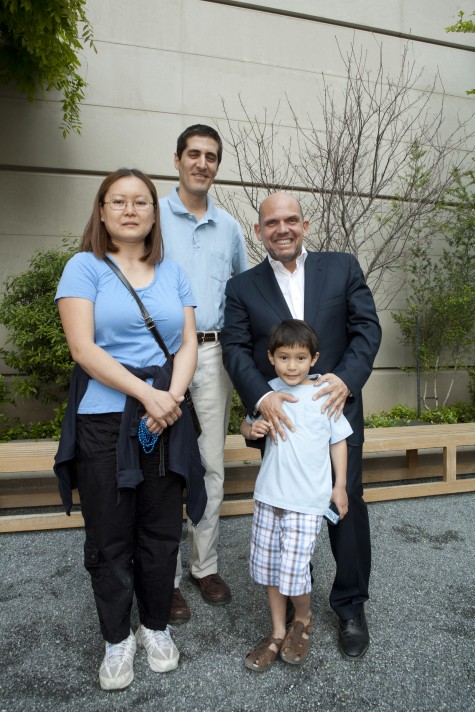This Saturday, April 25, we are celebrating the 5th anniversary of the DMA Autism Awareness Family Celebration. The first program took place in April 2010, tied to Autism Awareness Month, with research beginning in the summer of 2009. A frequent DMA visitor with a son on the autism spectrum sparked my interest in creating an event in which families with children on the spectrum felt welcomed and comfortable at the DMA. I found there weren’t many museums that offered programming for this audience. After discussions with special education parent groups, I discovered that very few families had ever visited the DMA with their children on the spectrum due to the uncertainty of how their child might behave when here. It became apparent that the key element for hosting a program for this audience should include the following: an event that was private for families who had kids with autism, working with an autism specialist to plan activities to meet the specific needs of children on the spectrum, and providing resources to parents about the DMA.
-
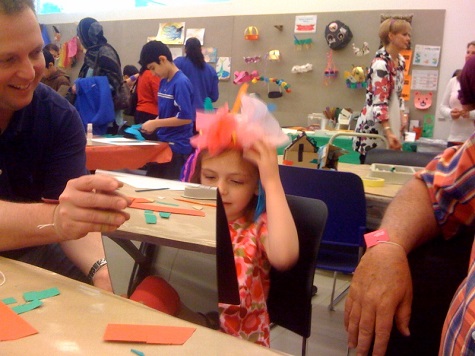
-
The first DMA Autism Awareness Family Celebration, April 2010
-
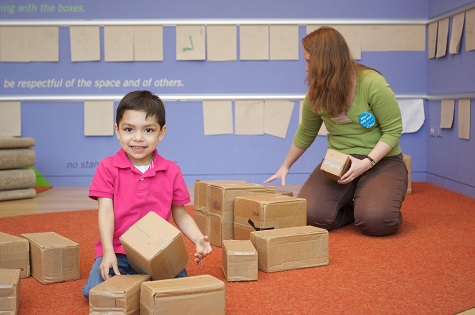
-
The first DMA Autism Awareness Family Celebration, April 2010
-

-
The first DMA Autism Awareness Family Celebration, April 2010
-
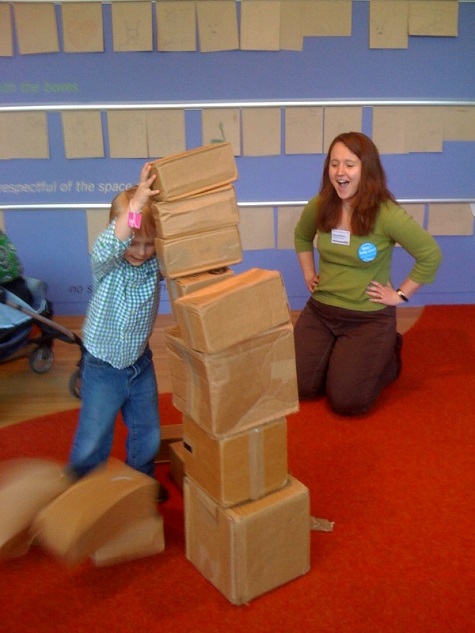
-
The first DMA Autism Awareness Family Celebration, April 2010
For our pilot program in April 2010, I worked with an autism specialist to schedule the morning’s events, connected with a music therapist specializing in working with children with autism for a performance, and created a social story so that parents registered for the event could review and plan in advance with their child. The response for the first event was overwhelming! It was important to keep the attendance relatively low, so as not to overwhelm the children—and the waiting list grew to be just as long as the list of attendees. We received supportive affirmations from grateful parents both during and after the event.
Five years later, these events are still robust and constantly adjusting to accommodate community needs. When we piloted this program, the prevalence of autism was 1 in 110 children. Since 2009, the frequency of autism has increased to 1 in 88, and more recently 1 in 68. The DMA program has evolved over the years to include themes for each event, the creation of a quiet-sensory space with the help of the School of Occupational Therapy at Texas Women’s University, and tours for teens on the spectrum.
We have learned a great deal from visitors over the years at our Autism Awareness Family Celebrations, including how important the experience is for the siblings. Annie, age 11, told us that she “like[s] coming here because no one stares at my brother.” It’s feedback like this that helps us improve the program, and we love hearing the impact the event has on our participants:
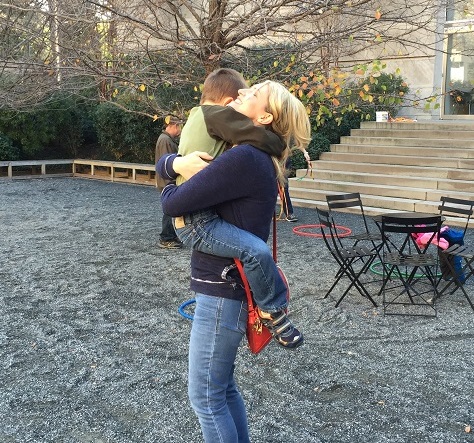
Angie and her son during an Autism Awareness Family Celebration
“Our family has a 6-year-old nonverbal son with autism, and a 3-year-old son that is typically developing. We are an active family that loves to enjoy what DFW has to offer. We’ve been going to the DMA Autism Awareness Family Celebration events for the last few years, and we absolutely love them! Having been to many other family events and museums in the area, we have never found anything like what the DMA offers. It is exciting and refreshing that the Museum provides a safe and fun sensory-friendly event for kids on the spectrum, as well as for siblings. It is good for my youngest to see other families similar to ours. We struggle with finding activities that both of my boys can enjoy. From the interactive music program to art activities and sensory toys, the DMA has thought of everything. We love watching them play and interact together! Thank you!” —Angie G.
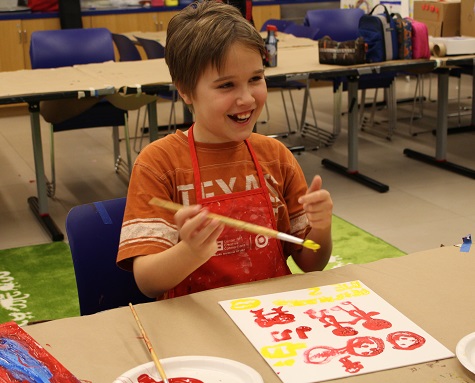
Rachel’s son attending Hands-On Art Summer Camp for Children with Autism at the DMA
“Our family is so thankful for the DMA’s outreach to the autism community. From the beginning, the DMA educators have provided programming very thoughtfully organized with the input of autism specialists and parents. Programs such as the Autism Awareness Days and their Summer Camp have opened up a new avenue for families with special needs children to explore and learn in the art museum. My son has attended the Hands-On Art Summer Camp for the past four years, and I’ve been so impressed with the camp preparation, the camp curriculum, and the trained educators and volunteers who have connected children with autism to the DMA’s art collection. My son feels very welcome at the DMA and always wants to return, which is such a blessing in light of the lack of educational public programming designed for children on the autism spectrum. The DMA has found their niche offering high-quality educational opportunities for special needs populations.” —Rachel S.
As we continue to learn more about the needs of children with autism, the definition of best practices in museums programming for this audience will continue to evolve. Society’s awareness of autism is fast-growing and, hopefully, more and more public institutions will begin to offer specialized experiences for kids on the spectrum and their families. It is important that nonprofits work together to share resources and help families with children on the spectrum feel comfortable visiting museums. Whether it is offering a summer camp just for children with autism (check out this year’s Hands-On Art Summer Camp at the DMA), creating a quiet corner in a museum gallery, or making a sensory-focused guide of your institution, we want all kids to have opportunities to learn, play, and have cultural experiences with their families.
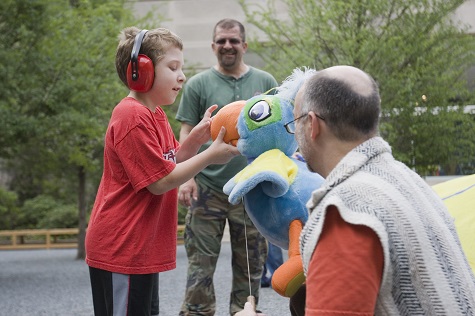
Learn more about all of the access programs the DMA offers at DMA.org.
Amanda Blake is the Head of Family, Access, and School Experiences at the DMA.
